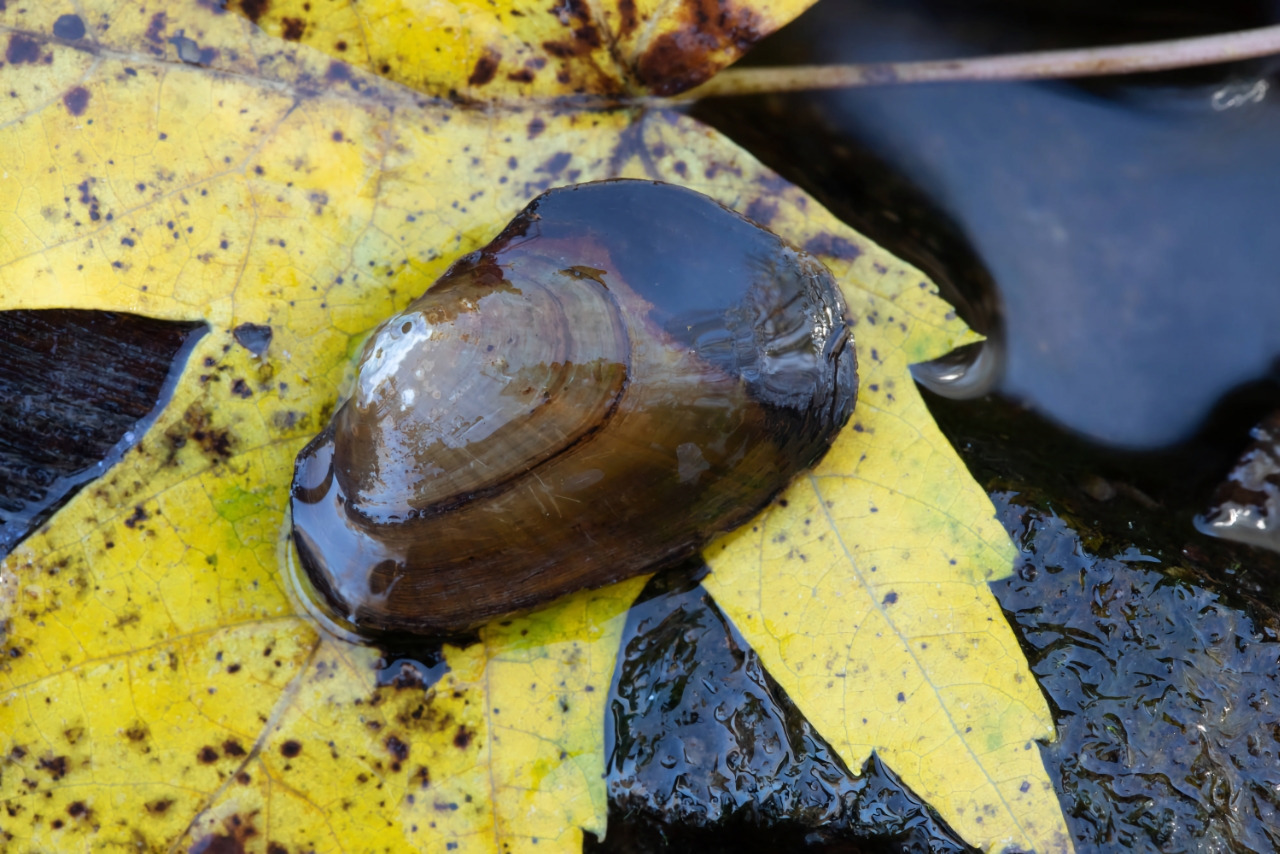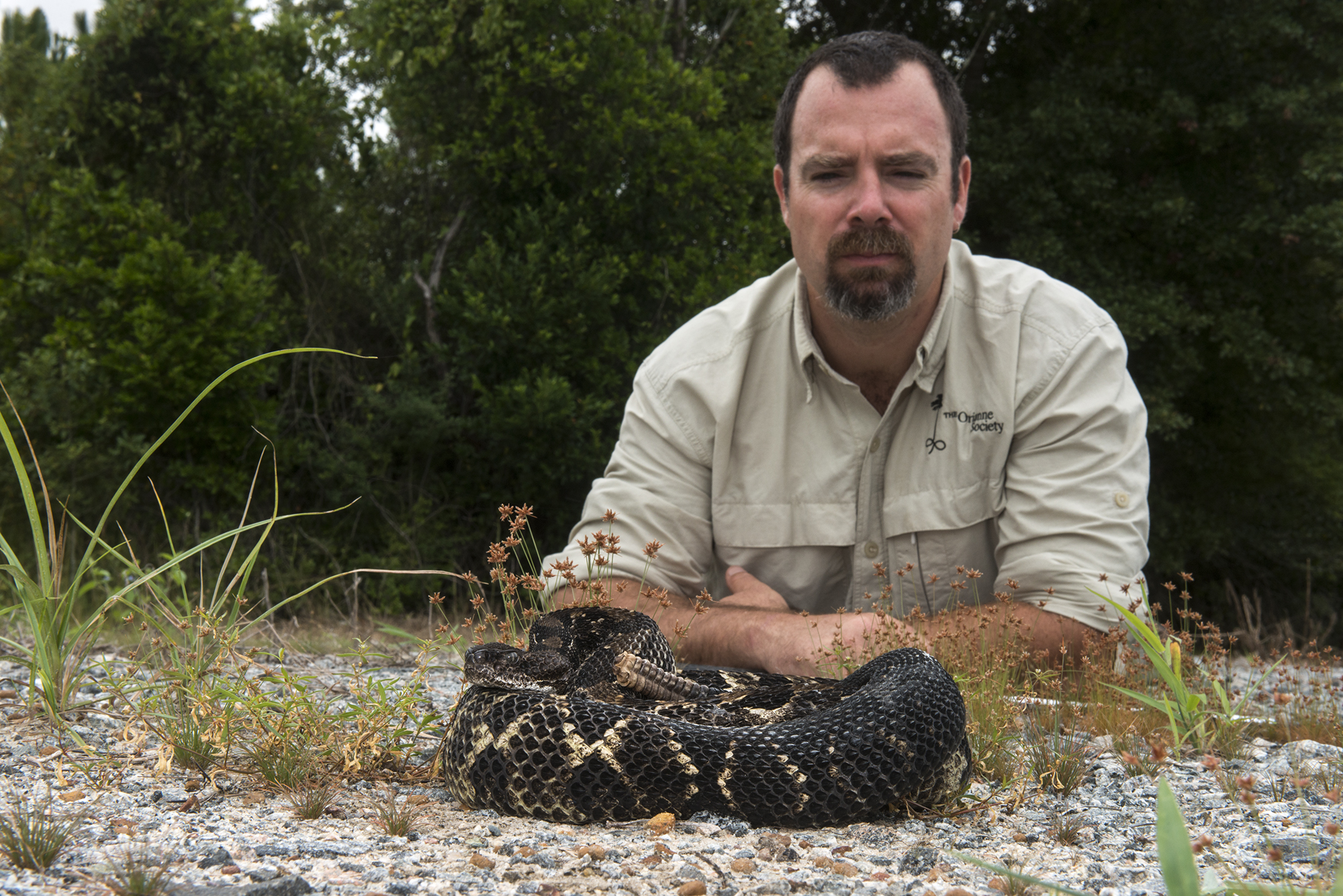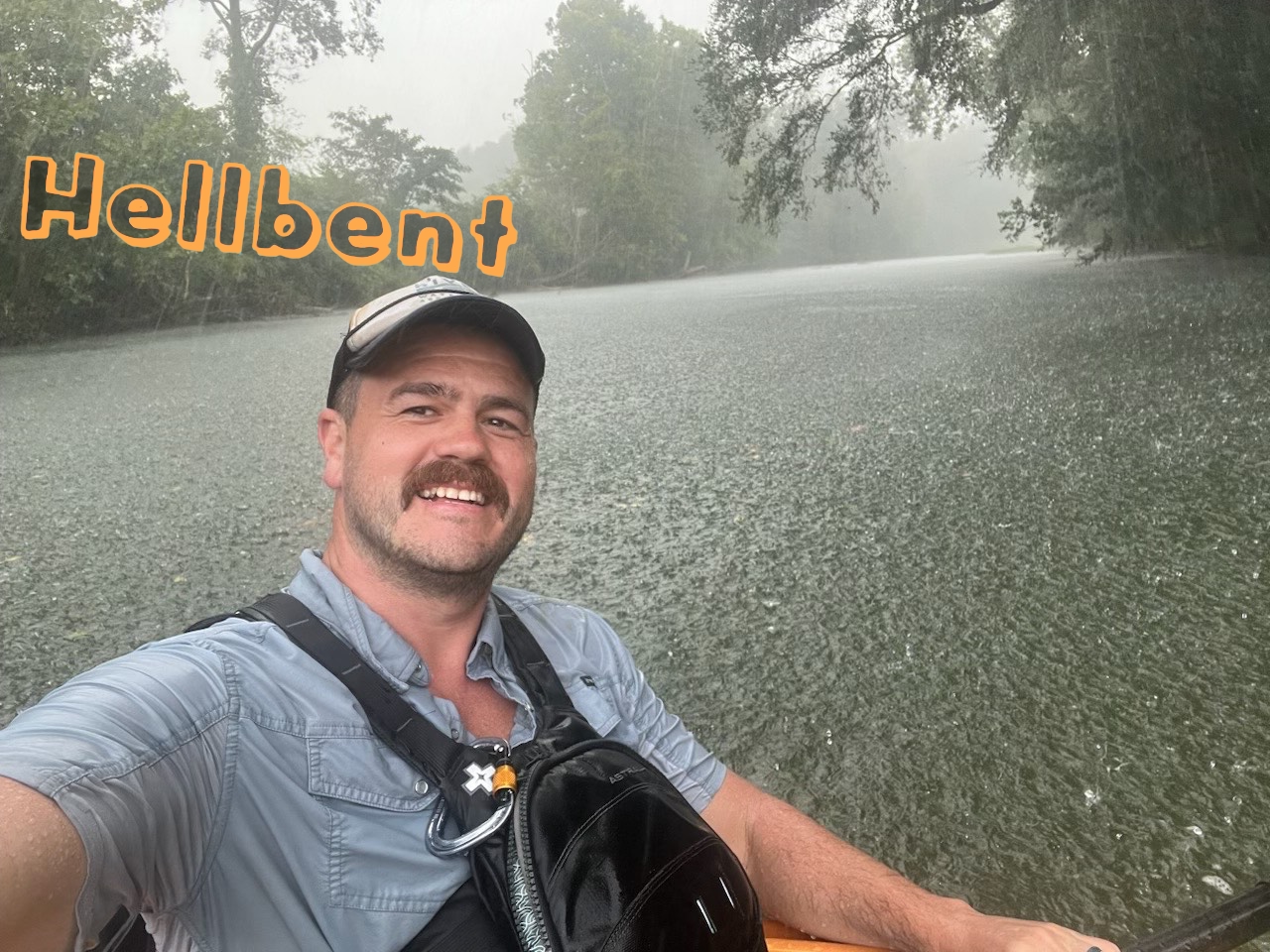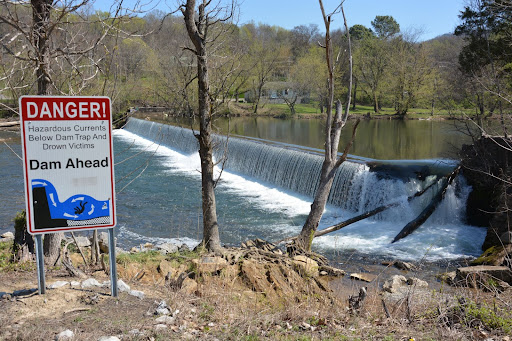
14 Life Below Water (83)
Conserve and sustainably use the oceans, seas and marine resources for sustainable development
50th anniversary of the Endangered Species Act
Written by Southern Environmental Law Center
For decades, the Endangered Species Act has served valuable in preserving species and making our region so unique
Dec. 28 marks the 50th anniversary of the Endangered Species Act — an important legal tool for protecting imperiled Southern species and their habitat. Since its passage in 1973, we’ve seen a nearly 99 percent success rate in preventing the loss of animals and plants protected under the law, including the iconic bald eagle and American alligator.
The Endangered Species Act establishes protections for fish, wildlife and plants that are listed as threatened or endangered; provides for adding species to and removing them from the list of threatened and endangered species, and for preparing and implementing plans for their recovery; provides for interagency cooperation to avoid take of listed species and for issuing permits for otherwise prohibited activities; provides for cooperation with States, including authorization of financial assistance; and implements the provisions of the Convention on International Trade in Endangered Species of Wild Flora and Fauna.
This bedrock environmental law reminds us there is still more work to do to protect the South’s rich biodiversity — including fighting in court to save at-risk species, advocating for more protective regulations, and defending the Endangered Species Act.
Homeward bound: local students release hundreds of lake sturgeon into Tennessee River
Written by Casey Phillips Conservation scientists with the Tennessee Aquarium Conservation Institute pose in the Tennessee River before releasing more than 600 juvenile lake sturgeon into the waterway. Tennessee Aquarium
Conservation scientists with the Tennessee Aquarium Conservation Institute pose in the Tennessee River before releasing more than 600 juvenile lake sturgeon into the waterway. Tennessee Aquarium
CHATTANOOGA — After bulking up all summer on a steady diet of bloodworms and brine shrimp, hundreds of juvenile lake sturgeon finally were returned to their ancestral waters this morning.
Under a nearly cloudless autumn sky, biologists from the Tennessee Aquarium Conservation Institute and third through fifth grade students from Girls Inc. of Chattanooga’s Fall Break Camp gathered on the north bank of the Tennessee River in Coolidge Park.
One by one, they carefully made their way to the river’s edge holding clear, water-filled plastic buckets containing five-month-old lake sturgeon. Amidst excited squeals and nervous laughter, they squatted down, gently depositing each sleek, armor-skinned fish into the shallows.
This latest release “class” included 667 lake sturgeon. Comparatively tiny now, these miniature river giants have the potential to reach nine feet in length and could live for up to 150 years.
Reintroduction events like this are the capstone payoff to a summer spent tirelessly caring for and — most of all — feeding these sturgeon, says Reintroduction Biologist II Teresa Israel.
“It’s really special. It’s hard to see them go, but it’s a happy day since we’ve seen them get so big, so we know they’ll be successful out there,” she said. “It’s a great accomplishment that completes the circle for all our hard work.”
Lake Sturgeon are considered endangered in Tennessee. As recently as the 1970s, this species had disappeared from both waterways due to the impacts of damming, poor water quality and over-fishing. Today’s release is the latest in the now-23-year-old effort to bring Lake Sturgeon back to the Tennessee River and Cumberland River.
“It has been a fantastic career. It has been kind of like a fantastic dream for me. A fantastic wonder.”
Written by Rachel Kovac
Electrofishing innovator retires after 30 years of service with TWRA
MORRISTOWN — Bart Carter, Tennessee Wildlife Resource Agency Region 4 Fisheries Program Manager, has retired after three decades of service to the state’s wildlife resources.
During his 33-year career, his work included improving hatcheries, enhancing fish habitat, restoring streams to native fish fauna, helping discover new species, adding public access areas, and mentoring employees.
One of his most significant developments during his career was designing and building new backpack electrofishing equipment.
“Electrofishing can be an effective tool for fish community sampling, fish relocation, invasive species eradication, (and) sampling fish tissue contaminants,” said Mark O’Neal, director of ETS Electrofishing systems, LLC in Madison, Wisconsin.
“The tools they use just stun fish and doesn’t kill them. It stuns them out and then they can weigh them and put a tag on them, without having to using a pole with a hook or a net,” O’Neal said.
“It puts out a high DC voltage pulse. On a boat system you have to use a larger pulse. More DC power to drive a current in the water. When the fish experience a DC current they go to the anoid,” O’Neal said.
- bart carter
- tennessee wildlife resource agency
- ets electrofishing system
- mark o’neal
- john hammonds
- region 4 reservoirs fisheries biologist
- region 4 fisheries program manager
- twra region 4
- american fisheries society
- rainbow trout
- warmwater streams biologist
- national park service
- south holston
- watagua
- clinch
- powell
- nolichucky
- french broad
- east tennessee river
Sturgeonfest 2023

Appalachian trout in trouble as temps rise, storms rage
Written by Dan Chapman Michael Bradley, a fly-fishing guide, on Raven Fork in the Oconaluftee area of the Great Smoky Mountains. U.S. Fish and Wildlife Service
Michael Bradley, a fly-fishing guide, on Raven Fork in the Oconaluftee area of the Great Smoky Mountains. U.S. Fish and Wildlife Service
Climate change could steal your fish
Dan Chapman is a public affairs specialist for the Southeast Region of U.S. Fish and Wildlife Service.
CHEROKEE — The mountains of the Southern Appalachians were scraped clean a century ago. Headwater ecology changed as the canopy of trees disappeared that was shading the streams from all but the noonday sun. Rainstorms pushed dirt and rocks into the water muddying the feeding and breeding grounds of fish, amphibians and insects.
Lower down the mountain, newly cut pastures edged right up to the creeks while cows mucked up the once-pristine waters. Invasive bugs killed hemlocks, ash and other shade-giving trees. Pipes, culverts and dams blockaded streams and kept animals from cooler water.
The trout never had a chance.
Now they face an even more insidious foe — climate change.
- doug reed
- chattahoochee national forest
- trout season
- trout unlimited
- nc institute for climate science
- mike lavoie
- wild brook trout
- fly fishing team
- oconaluftee river
- raven fork
- ela dam
- toccoa river
- trout fishing in the southern appalachians
- dan chapman
- eastern band of cherokee indians
- eastern brook trout
- trout fishing
- qualla boundary
- brown trout
- rainbow trout
- north carolina state university
- chattahoochee river
- rough branch
- dissolved oxygen
- climate change
- headwater
- fish biodiversity
- fish stock
- fishing
- fish hatchery
- drought
- hemlock woolly adelgid
- sedimentation
- coldwater fishery
- fish disease
SELC settlement protects blue-blood horseshoe crabs and their avian dependents
 Red Knot.
Red Knot. Chuck Homler
CHARLESTON — A landmark settlement prohibits horseshoe crab collection on the beaches of more than 30 islands along the South Carolina coast that are established feeding sites for rufa red knots during their annual migration — as well as any harvesting in Cape Romain National Wildlife Refuge — for at least five years.
Every spring, red knots time their 9,300-mile migration from South America to the Canadian Arctic perfectly so they stop on the same beaches of South Carolina at the exact moment horseshoe crabs begin to spawn.
These protein-rich crab eggs are critical for red knots, providing the fuel they need to complete their transpolar journey. This delicate relationship between horseshoe crabs and red knots has developed over millions of years.
Officials mull farm runoff as possible cause
NEWPORT — Tennessee state conservation, agricultural and environment officials are investigating a widespread fish kill along the lower Pigeon River.
The probe began on Aug. 12 after Tennessee Wildlife Resource Agency officers noticed multiple species of dead fish along the river near Newport.
Aquatic life in the Pigeon River, a popular rafting, kayaking and fishing spot boasting big smallmouth bass, has steadily recovered following years of pollution from the upstream paper mill in Canton. The Pactiv Evergreen site permanently closed earlier this year, after it and previous owners drastically reduced the amount of effluent into the river. Fishing and whitewater sports rapidly took off from there.
TWRA didn’t immediately identify the reason for the fish kill, which remains under investigation, but alluded to sediment and agricultural runoff that spiked during heavy rains this month.
Here is the full news release from TWRA:
“The Tennessee Wildlife Resources Agency (TWRA) and the Tennessee Dept. of Environment and Conservation (TDEC) are jointly investigating a fish kill on the Pigeon River above Newport.
“On Friday, TWRA wildlife officers reported dead fish on the Pigeon River from Edwina Bridge down to the Newport police station. TWRA fisheries biologists responded to the area documenting multiple species of dead fish at several locations. Based on the dispersal of the fish, recent water generation from the dam likely pushed them further downstream while leaving higher numbers of dead fish at the top of the kill zone.
“To determine potential contributing factors, biologists investigated the surrounding area and documented muddy runoff from agriculture fields likely caused by heavy rains in the area.
“TWRA biologists contacted the TDEC field office in Knoxville to assist with the incident and notified the Tennessee Department of Agriculture of the investigation.
The incident currently remains under investigation.”
Virginia Tech sleuths are investigating mysterious hellbender disappearances
Written by Mike Allen Virginia Tech Professor Bill Hopkins preparing to gently return a hellbender to its underwater home in a Virginia stream after taking measurements. Lara Hopkins/Virginia Tech
Virginia Tech Professor Bill Hopkins preparing to gently return a hellbender to its underwater home in a Virginia stream after taking measurements. Lara Hopkins/Virginia Tech
One clue: They eat their own in deforested stream corridors
Mike Allen is a media relations officer for Virginia Tech.
BLACKSBURG — The gigantic salamanders known as hellbenders, once the apex predators of many freshwater streams, have been in decline for decades, their population constantly shrinking. No one knew why. William Hopkins, professor in the Department of Fish and Wildlife Conservation and director of the Global Change Center at Virginia Tech, suspected the hellbenders’ plight had connections with environmental changes engineered by humans.
Hellbender males select nesting sites on stream bottoms and guard the eggs laid there by females — and occasionally the salamander dads snack on the eggs, consuming them before they ever get to hatch. A study that Hopkins led, conducted through eight years of snorkeling in ice-cold Southwest Virginia streams and published in The American Naturalist, determined that in deforested areas, hellbender fathers are far more likely to eat their entire brood than in areas that still have lush foliage.
This behavior, known as filial cannibalism, probably evolved as a survival tactic for enduring harsh conditions. Prior to Hopkins’ results, scientists were not aware that hellbenders’ filial cannibalism drastically increased in cleared lands, actively speeding the species out of existence.
Green floater mussels are somewhat safe here but not elsewhere
Written by Thomas Fraser A green floater mussel (Lasmigona subviridis). Ryan Hagerty/USFWS
A green floater mussel (Lasmigona subviridis). Ryan Hagerty/USFWS
WASHINGTON — The green floater, a freshwater mussel native to the waters of Southern Appalachia, is now formally considered at risk of extinction due to the loss and fragmentation of its aquatic habitat.
The U.S. Fish and Wildlife Service determined the green floater, historically found in 10 eastern U.S. states, is likely to become endangered due to existing and emerging threats. The service is proposing to list the mussel as threatened under the Endangered Species Act.
The green floater is still found in its native range in North Carolina, Tennessee, Virginia and West Virginia. It is considered locally extinct in Alabama and Georgia.
While the species has strongholds in places, green floaters are rare in nearly 80 percent of the watersheds where they naturally occur. More than 75 percent of the nation’s native freshwater mussel species are endangered or threatened, considered to be of special conservation concern, or presumed extinct, according to USWFS.
Orianne Society shakes, rattles and rolls to preserve precious Southeastern snakes
Written by Ray Zimmerman Chris Jenkins researches timber rattlesnakes like the one seen here. Courtesy Orianne Society
Chris Jenkins researches timber rattlesnakes like the one seen here. Courtesy Orianne Society
New film highlights importance of rattlesnakes to the Southern Appalachian environment
Timber rattlesnakes have been demonized for centuries, perhaps to the extent humans are incapable of understanding the snake’s importance to the world.
The Orianne Society determined the apex predator is of vital importance to the Appalachian region, yet the snake is facing tremendous challenges to its survival.
The film “Rattled: Conserving Rattlesnakes in Appalachia — A Conservation Documentary.” introduced those sentiments when it premiered in Atlanta and other locations in Georgia and North Carolina.
Researcher Dr. Chris Jenkins, CEO of the Orianne Society, is behind the story for the film.
Jenkins said timber rattlesnakes are declining across their range from Maine to Texas. Wildlife biologists attribute the decline to “low recruitment,” meaning reproductive rates that fail to replace their population.
A female rattlesnake may live 50 years, though most live only to 30 or 40. Maturity usually requires 10 years, and snakes may only produce young every other year. The broods are small and the mortality rate is high among young snakes. Rattlesnakes that encounter humans are often killed, leaving no successors.
- timber rattlesnake
- tennessee snake
- are there rattlesnakes in the southeast?
- orianne society
- chris jenkins
- rattled: conserving rattlesnakes in appalachia – a conservation documentary
- chattooga river
- cottonmouth snake
- wildlife conservation society
- pit viper
- snake fungal disease
- crotalus horridus
- indigo snake
- population dynamic
- copperhead
- venomous snake
- snake in my yard
- avoid snake bite
- gopher tortoise
- longleaf pine forest
- keystone species
- hibernaculum
More...
Tennessee Aquarium brings more baby sturgeon into the world
Written by Casey Phillips A young lake sturgeon is viewed through a photographic aquarium after arriving at the Tennessee Aquarium Conservation Institute. Tennessee Aquarium
A young lake sturgeon is viewed through a photographic aquarium after arriving at the Tennessee Aquarium Conservation Institute. Tennessee Aquarium
Tennessee Aquarium welcomes 2,500 baby lake sturgeon as restoration effort turns 25 years old
Casey Phillips is a communications specialist at the Tennessee Aquarium in Chattanooga.
CHATTANOOGA — The approach of summer coincided with the arrival of thousands of juvenile lake sturgeon in the Tennessee Aquarium Conservation Institute.
Biologists at the Aquarium’s freshwater field station welcomed 2,500, 2-inch babies into their care. After a steady diet of bloodworms and brine shrimp, bringing the fish to at least 6 inches, they will be reintroduced into the Tennessee River.
These tiny fish hold tremendous promise. Adult lake sturgeon may reach lengths of 8 feet and live 150 years.
“They start out really small, so it’s shocking to think how big they can get,” says reintroduction biologist Sarah Kate Bailey. “The first year of life is when they grow the quickest.
“They grow so fast while we have them here. You’ll go home for the day, come in the next morning, and they look like they’ve grown overnight.”
- tennessee lake sturgeon
- sturgeon in tennessee river
- sturgeon recovery
- sturgeon reintroduction
- casey phillips writer
- lake sturgeon
- sarah kate bailey
- clean water act of 1972
- dr anna george
- chattannoga aquarium
- chattanooga environment
- Tennessee
- warm springs natural fish hatchery
- lake sturgeon working group
- tva
- tennessee valley authority
- reservoir water release
- tennesse wildlife resources agency
- tennessee aquarium conservation institute
- tennessee aquarium
Hellbent: Little River Watershed Association swims upstream to protect one of Earth’s great rivers
Written by JJ Stambaugh![Andrew Gunnoe, President of Little River Watershed Association]() Andrew Gunnoe is seen in the rain on Little River in Blount County, Tennessee. He is board director for Little River Watershed Association. Courtesy LRWA
Andrew Gunnoe is seen in the rain on Little River in Blount County, Tennessee. He is board director for Little River Watershed Association. Courtesy LRWA
Andrew Gunnoe helms spirited efforts to preserve beloved Little River but the current is swift
MARYVILLE — For 25 years, the handful of men and women involved with the nonprofit Little River Watershed Association (LRWA) have been protecting the crystal clear waters as they plummet from the Great Smoky Mountains before meandering through Blount County and merging with the Tennessee River.
“We see ourselves as the voice of the Little River, speaking for the river and its health,” said Andrew Gunnoe, president of the LRWA Board of Directors.
From the famous swimming hole at the Wye to the profusion of inner tube rental companies in Townsend, the Little River is one of the region’s most popular spots for water recreation. Further downstream, the waterway becomes an almost perfect spot for fishing, canoeing and kayaking.
For all the popularity as a recreation stop, the 59-mile stretch of water is also a vital habitat for numerous aquatic species and provides the 120,000-plus residents of Blount County with drinking water.
- little river diversity threat
- little river
- little river aqautic life
- little river watershed association
- preserving water quality
- maryville, tennessee
- townsend
- great smokies
- little river national park
- conservation fisheries
- biodiversity
- blount county
- tennessee valley authority
- escherichia coli
- tva
- e coli
- stream school
- university of tennessee environmental studies and sustainability
- sediment pollution
- water quality monitoring
Will Little River run wild and free again?
Written by Andrew Gunnoe and Élan Young![PeerysMill]() Peery’s Mill Dam on the Little River could be dismantled following a federal survey of dams along the river. Andrew Gunnoe/Hellbender Press
Peery’s Mill Dam on the Little River could be dismantled following a federal survey of dams along the river. Andrew Gunnoe/Hellbender Press
Army Corps of Engineers studies Little River for potential dam removal
TOWNSEND — In February the Army Corps of Engineers announced a study to evaluate potential effects of proposed removal or modification of three dams on the Little River. These dams include the Townsend Dam, Peery’s Mill, and Rockford. The announcement sparked a public furor in Blount County over potential impact that dam removal might have on the Little River and adjoining communities.
The results of the Army Corps’ study are not expected until June or July. Despite not knowing the study’s findings — which may include recommendations of full or partial removal of individual dams, or no action at all — the Blount County Commission unanimously passed a resolution in April calling for the preservation of all three dams. The resolution was sponsored by 14 of the 21 commissioners (it takes 11 votes to pass a resolution).
- little river
- elan young journalist
- elan young
- andrew gunnoe
- little river diversity threat
- little river endangered fish
- little river watershed association
- walland dam
- rockford dam
- army corps of engineers
- blount county commission
- blount county dam
- blount county little river
- blount county soil conservation district
- low head dam
- dam removal
- dam obstructions
- removing dam
- wild river
- hellbender press
- hellbender press little river
David Etnier, a legendary chronicler and advocate for lesser-known regional fish, dies at 84
Written by Ben Pounds![David Etnier]() Courtesy JR Shute
Courtesy JR Shute
Etnier left behind a legacy of research and ambitious students
KNOXVILLE — Dr. David Etnier, a professor at the University of Tennessee internationally known for his research on freshwater fishes and caddis flies, died May 17 at the age of 84.
Etnier, known as “Ets” to his students, joined the UT faculty in 1965 and retired in 2001. Three aquatic insect species he helped discover are named after him, and those are just three of the more than 410 insect species he helped discover.



